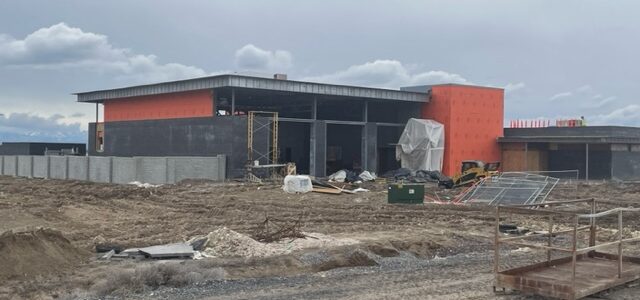As the weather warms, Eagle Mountain City’s Parks department is once again planning to combat graffiti at the community’s skate park.
The skatepark, located at Pony Express Park, is occasionally closed to residents so clean-up crews can remove graffiti and make repairs to other vandalism.
Greg Robinson, Parks and Cemeteries supervisor, is responsible for graffiti clean-up efforts. Though vandalism reports slow during the winter months, Robinson says the Parks department saw several reports of graffiti last year.
“The skate park… [vandalism] was happening on a monthly basis, minimum,” Robinson says. “Sometimes it’d be more often, like multiple times a week.”
For Robinson and the Parks department, removing the graffiti in a timely manner is considered a high priority due to what many would consider inappropriate words and depictions of human body parts drawn on the concrete.
According to Robinson, the method of removal depends on the severity of the damage.
“If we feel like it’s something we can do ourselves, we clean it up within our department,” he says. “If it’s something we feel we cannot get cleaned up, then we would hire an outside source to clean it up.”
Robinson says that the damages can range from $300 to more than $1,500 of taxpayer money to repair. It can also cost City staff valuable time that could be dedicated to other projects throughout the community.
“It’s a time thing for us, just an inconvenience,” he says. “And then, for the people that use that skate park as it’s intended to be used…they’re inconvenienced because the skate park is closed.”
According to Robinson, the Parks department installed a gate to mitigate vandalism in the skate park. However, the alleged vandals removed the gate entirely, throwing it in the weeds.
Robinson anticipates that the number of vandalism reports will increase as the summer months approach.
A study by Horowitz & Tobaly found that the primary motives for vandalism are anger/frustration, boredom, erosion, aesthetics and catharsis. It also found that vandals are primarily around 12-15 years of age, and are typically students. Robinson says this description fits the alleged perpetrators of graffiti vandalism in Eagle Mountain.
“Most of it is what you would think junior high kids would spray paint,” he says. “Most of it is inappropriate language or images, stuff like that.”
Robinson says that the Parks department has also seen an increase in vandalism lately in the bathrooms and other buildings at Cory Wride Memorial Park and Nolan Park.
Another skate park is planned as part of the City’s Smith Ranch Park effort planned to start construction this summer.
Residents who spot graffiti or other vandalism are encouraged to report it to the Parks department through the resident portal. If residents see any acts of vandalism in progress, they should notify the Utah County Sheriff’s Office Eagle Mountain division.
Eagle Mountain City has considered cameras at the skate park location to combat graffiti and other forms of vandalism. No timeline currently exists for implementing security cameras.











